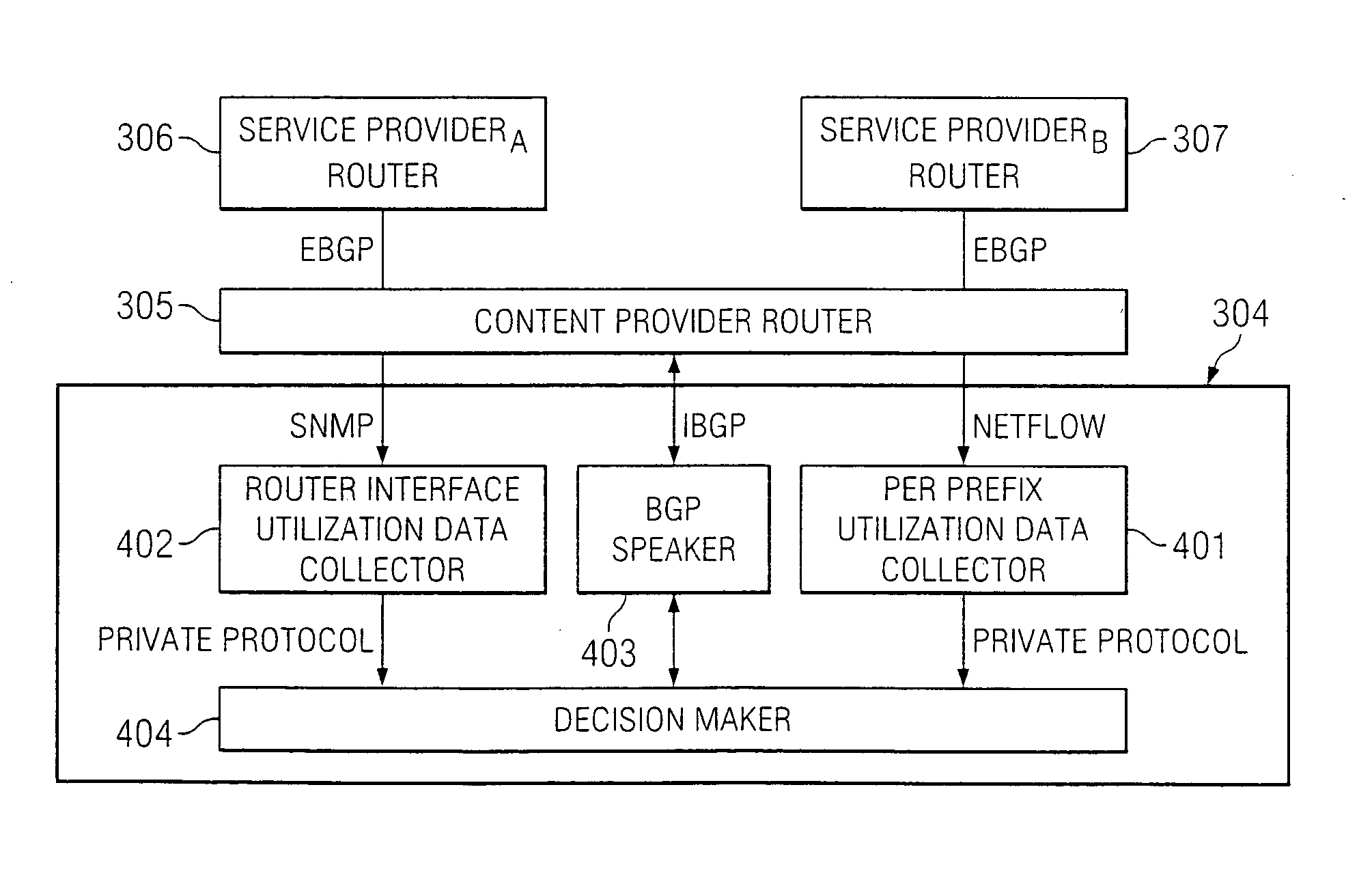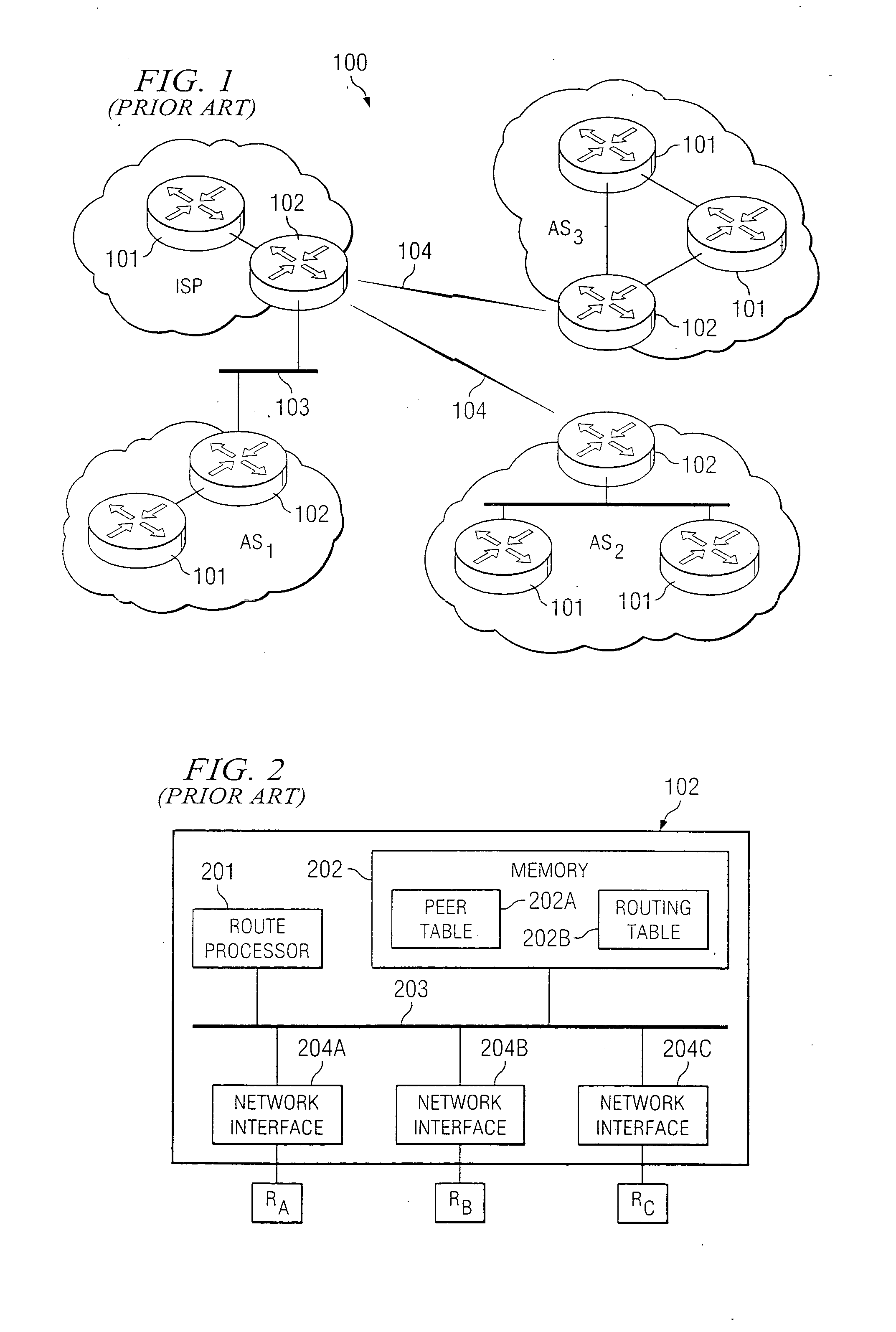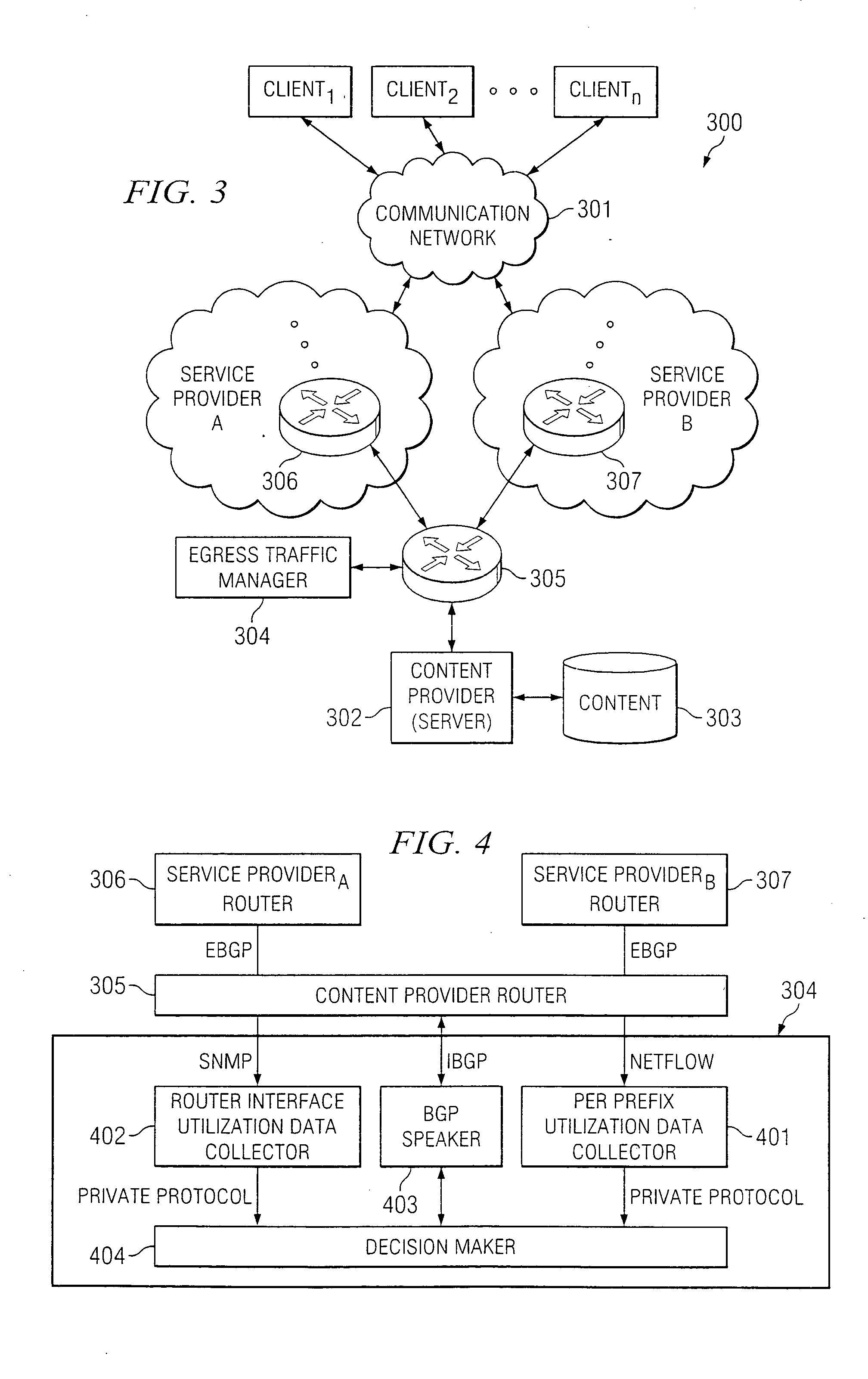Method and system for controlling egress traffic load balancing between multiple service providers
a traffic load and service provider technology, applied in the field of data routing within communication networks, can solve the problems of inefficient service provider technique for servicing client requests, ineffective benefit of redundant backup service provider resources which are idle, and complex and critical role of routing in network operations
- Summary
- Abstract
- Description
- Claims
- Application Information
AI Technical Summary
Benefits of technology
Problems solved by technology
Method used
Image
Examples
Embodiment Construction
FIG. 1 shows a schematic block diagram of a typical computer network 100 with which embodiments of the present invention may be utilized. Computer network 100 comprises a plurality of autonomous systems (“ASs”) or routing domains interconnected by intermediate nodes, such as conventional intradomain routers 101 and inter-domain routers 102. As shown in the example of FIG. 1, the ASs may include an Internet Service Provider (ISP) domain and various routing domains (AS1, AS2, and AS3) interconnected by interdomain routers 102. As described further hereafter, certain content providers (not shown) may be communicatively coupled to a plurality of different ones of such ISP domains.
Interdomain routers 102 may be further interconnected by shared medium networks 103, such as Local Area Networks (LANs), and point-to-point links 104, such as frame relay links, asynchronous transfer mode links or other serial links. As is well-known, communication among the routers is typically effected by ex...
PUM
 Login to View More
Login to View More Abstract
Description
Claims
Application Information
 Login to View More
Login to View More - R&D
- Intellectual Property
- Life Sciences
- Materials
- Tech Scout
- Unparalleled Data Quality
- Higher Quality Content
- 60% Fewer Hallucinations
Browse by: Latest US Patents, China's latest patents, Technical Efficacy Thesaurus, Application Domain, Technology Topic, Popular Technical Reports.
© 2025 PatSnap. All rights reserved.Legal|Privacy policy|Modern Slavery Act Transparency Statement|Sitemap|About US| Contact US: help@patsnap.com



